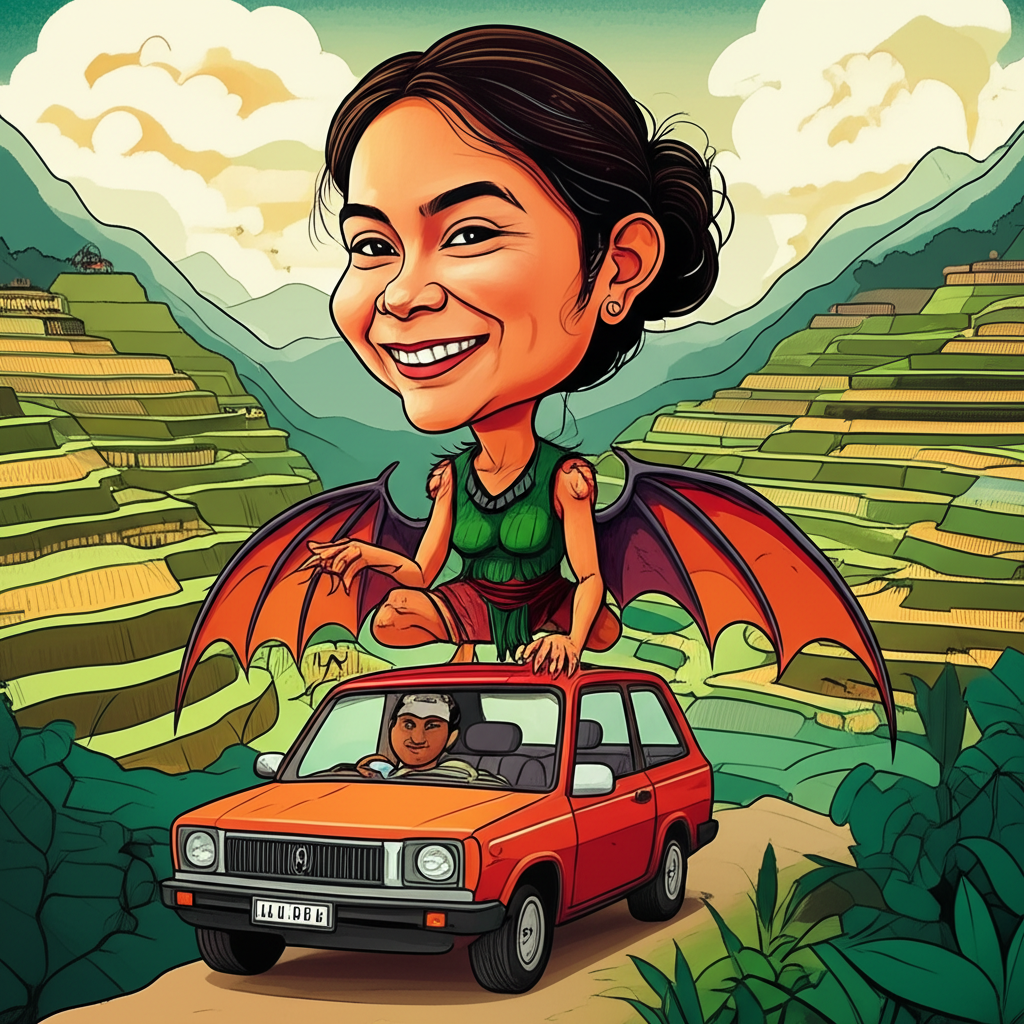
The humid air of the Visayas islands, a tapestry of emerald peaks and sapphire waters, has long been a canvas for tales woven from the threads of ancient beliefs. Among these, the legend of the Kapre, a colossal arboreal guardian, and its whispers, the "Anitun Tabu," resonates with the echoes of a time when the world was perceived through a lens of animism and profound respect for the unseen forces of nature. This is not a chronicle of divine power or an invitation to worship, but a journey into the rich tapestry of traditional Filipino folklore, a testament to the imaginative spirit of ancient peoples and their unique understanding of the world.
The Roots of Wonder: A Pre-Colonial Landscape
Before the arrival of foreign influences, the pre-colonial Visayan society was deeply intertwined with the rhythms of the natural world. Life revolved around the bounty of the land and the sea, and every rustle of leaves, every crash of waves, held a potential significance. Their worldview was animistic, believing that spirits, or anitos, inhabited everything – from towering trees to bubbling springs, from the swift currents of rivers to the vast expanse of the ocean. These spirits were not necessarily benevolent or malevolent in a simplistic sense; they were forces of nature, embodying its power, its capriciousness, and its enduring mystery.
The Kapre, in this context, was an embodiment of the untamed forests, a silent sentinel of the ancient trees. The concept of Anitun Tabu, often translated as "the wind that can be heard" or "the voice of the wind," speaks to the ancient people’s ability to interpret the subtle messages of their environment. It was a time when observation and intuition were paramount, and the whispers of the wind through the leaves were believed to carry pronouncements, warnings, or even guidance from the spirit world. These stories were not mere entertainment; they served as a means of understanding, respecting, and navigating a world that was both beautiful and formidable.
The Shadow in the Canopy: Portraying the Kapre
The Kapre, as depicted in these ancient tales, is a creature of immense stature and formidable presence. Imagine a giant, often described as being as tall as a coconut tree, with skin the color of bark and hair like tangled vines. Its eyes are said to glow like embers, and its breath carries the scent of damp earth and ancient wood. It is not a creature of malice, but rather one of primal guardianship, tied to the oldest and most majestic trees. Its presence was often associated with the deep, dark interiors of forests, places that inspired both awe and a healthy dose of trepidation.
The symbolic attributes of the Kapre are rooted in its connection to the arboreal realm. It represents the sheer power and longevity of nature, the ancient wisdom held within the silent, enduring trees. Its immense size speaks to the overwhelming force of the natural world, a force that could both nurture and destroy. The glowing eyes can be interpreted as the watchful gaze of nature itself, observing and responding to the actions of those who venture into its domain. The Kapre, therefore, embodies the respect and deference that was due to the natural environment by the people who depended on it for survival.
The Whispering Wind and the Giant’s Vigil: A Narrative Retelling
The tale of the Kapre and the Anitun Tabu often unfolds in the twilight hours, when the forest canopy begins to deepen into shadows and the world outside the village seems to hold its breath. It is said that long ago, when the Visayan islands were cloaked in an even more profound wildness, the Kapre resided in the heart of the densest jungles. These were not just trees; they were living monuments, their roots delving deep into the earth, their branches reaching towards the heavens.
The Kapre would slumber for long stretches, a silent guardian amidst the ancient foliage. But when it stirred, its movements were like the groaning of ancient timber. The villagers, living on the fringes of these wild places, learned to listen. They would hear the rustling of leaves, a sound more profound than mere wind. It was the Anitun Tabu, the whispers of the Kapre, a language understood not through words, but through the subtle shifts in the air, the tremors in the ground, and the patterns of the wind.
Sometimes, the Anitun Tabu would manifest as a gentle sigh, a reassurance that the forest was at peace, that the Kapre was content. This was a time for the villagers to venture deeper, to gather medicinal herbs or to hunt, always with reverence, always with the understanding that they were guests in a sacred space. But other times, the whispers would take on a more urgent tone. The wind would howl through the branches with a mournful cry, the leaves would churn with a frantic energy. This was the Kapre’s displeasure, a warning of impending storms, of landslides, or of the consequences of disrespecting the forest.
There are stories of brave hunters who, out of hubris or desperation, strayed too far into the Kapre’s territory, ignoring the subtle cues of the Anitun Tabu. They would find themselves disoriented, lost in a maze of trees that seemed to shift and close in around them. The whispers would turn into a low rumble, a deep, guttural sound that vibrated through their very bones, not a roar of anger, but a profound expression of the forest’s displeasure. Such individuals would often return, humbled and forever changed, with tales of the immense, shadowy figure they glimpsed in the periphery, a silent testament to the power they had disturbed.
The Anitun Tabu was also believed to carry messages of protection. If a village was threatened by external forces, or by a natural disaster, the wind might whisper a warning, guiding them to safer grounds or revealing hidden paths to safety. It was a symbiotic relationship, forged in the crucible of survival, where understanding the "language" of the forest meant the difference between life and death.
The Meaning in the Murmurs: Symbolism and Ancient Understanding
The Kapre and the Anitun Tabu served as potent symbols for the ancient Visayan people. Primarily, they represented the profound interconnectedness of all things. The Kapre, rooted to its ancient tree, was a symbol of the enduring strength and stability of nature. Its whispers, the Anitun Tabu, were the tangible manifestation of this connection, a way for the unseen world to communicate with the human realm.
These stories also likely served as a mechanism for teaching morality and respect for the environment. The Kapre’s displeasure was a natural consequence of disrespect, a reminder that human actions had repercussions within the larger ecological system. It fostered a sense of humility and responsibility, encouraging people to live in harmony with nature rather than attempting to dominate it.
Furthermore, the Anitun Tabu could be seen as a representation of the wisdom that lies hidden within the natural world. The ability to interpret these subtle signs required keen observation, intuition, and a deep understanding of the environment – qualities that were essential for survival in their time. It was a testament to their ability to find meaning and guidance in the most unassuming of natural phenomena.
Whispers in the Digital Age: Modern Interpretations
In contemporary times, the legend of the Kapre, like many other myths and legends, has found new life in various forms of media and cultural expression. In literature, the Kapre often appears as a formidable guardian in fantasy novels, a character that embodies the primal forces of the wild. Filipino filmmakers and animators have also drawn inspiration from these tales, bringing the colossal creature to life on screen, often depicting it with a blend of awe-inspiring power and a touch of melancholic solitude.
Video games have embraced the Kapre as a challenging boss encounter or an iconic creature that represents the untamed wilderness. These modern interpretations often lean into the more dramatic and visually striking aspects of the legend, transforming the ancient whispers into grand spectacles. Cultural studies scholars and folklorists continue to explore these stories, analyzing their origins, their symbolism, and their enduring relevance in understanding Filipino identity and their historical relationship with nature.
A Legacy of Storytelling: Conclusion
It is crucial to reiterate that the tale of the Kapre and the Anitun Tabu is a traditional story, a product of the rich imagination and unique worldview of ancient peoples. It is not a factual account, nor is it intended to be believed as literal truth. As Muslims, we recognize that only Allah (SWT) is the true Creator and Sustainer of all that exists, the ultimate power and source of all understanding.
However, the enduring presence of such stories speaks volumes about our shared human heritage. They are echoes of a time when human beings sought to comprehend their place in the universe through the lens of nature, when the whispers of the wind carried profound meaning, and when the shadows of the forest held guardians of immense power. These tales, passed down through generations, are not just stories; they are a testament to the power of human imagination, the resilience of cultural traditions, and the enduring human need to find meaning in the world around us. The echoes of Anitun Tabu and the silent vigil of the Kapre in the Visayan seas continue to resonate, reminding us of the deep wellspring of our cultural heritage and the timeless art of storytelling.





